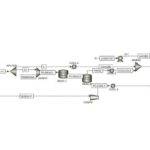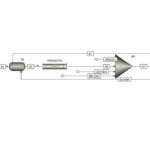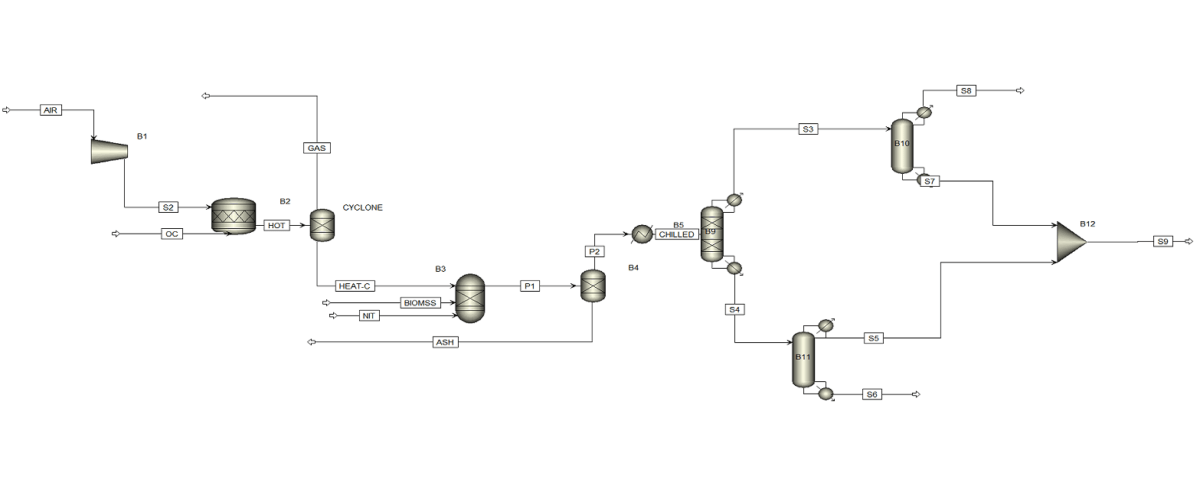Introduction
Bagasse, a fibrous byproduct of sugarcane processing, is derived from the residue left after sugarcane stalks are crushed to extract juice. This lignocellulosic material has gained significant attention in recent years due to its renewable and sustainable nature.
Production Process
Once the sugarcane juice is extracted, the remaining fibrous material is known as bagasse. Through processes involving high heat and pressure, this material can be molded into various shapes, such as bowls and plates.
Global Production
Brazil, India, Europe (particularly France), China, and Thailand are the world’s top five sugarcane producers. The climatic conditions in these countries are conducive to sugarcane cultivation. The versatility of sugarcane is remarkable; not only can it be used to produce plant-based foodware, but it also serves as a source for biofuels, helping to mitigate the environmental impact of fossil fuels. Additionally, bagasse is used as animal feed, contributing to the production of greenhouse gases like methane through processes such as fermentation and composting.
Historical Perspective
Historically, bagasse was often discarded as agricultural waste, contributing to environmental pollution. However, due to its high calorific value, it has been utilized as a fuel source in sugar mills. Advancements in technology have enabled the generation of 200-300 kilowatt-hours of electricity per ton of bagasse. Researchers are also exploring its potential as a biofuel. Owing to its eco-friendly properties, bagasse-based products have gained widespread acceptance among food distributors in cities like London.
Texture and Color
Bagasse fiber imparts a unique texture to products, distinct from traditional plastics. Bagasse-based tableware often feels slightly rough, similar to cardboard. The natural color of bagasse products is typically beige or light brown, although they can also be bleached to appear white.
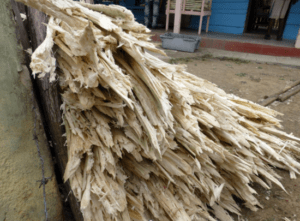
Bagasse Application
Bagasse, a fibrous residue that remains after sugarcane juice is extracted, has a wide range of applications. Some of the most common uses include:
- Power generation: Bagasse can be burned directly to produce steam, which in turn drives turbines to generate electricity.
- Packaging: Due to its fibrous nature, bagasse can be used to produce biodegradable packaging materials for food products.
- Alcohol production: Bagasse can be converted into ethanol, a biofuel that can be used as a fuel additive or as a standalone fuel.
- Medium-density fiberboard (MDF): Bagasse fibers can be used to manufacture MDF, a versatile building material.
- Paper production: Bagasse pulp can be used to produce paper products.
- Biofuel: Bagasse can be converted into biofuels, such as biogas and bioethanol, which are renewable energy sources.
Biofuel: The Fuel of the Future
Biofuel, often referred to as green fuel, is a gaseous, liquid, or solid fuel whose energy content is derived from biological material, known as biomass.
Biodiesel Production from Bagasse
Biodiesel is an advanced fuel for diesel engines. It has excellent lubricity, is sulfur-free and aromatic-free, and in addition to being oxygenated, it has a high cetane number and It also has a proven effect in reducing smoke, noise, and harmful odors, It can be used as a substitute fuel because it has a high density, high energy, high ignition efficiency in engines, and a positive energy balance. No other fuel can match the quality of biodiesel, and it is also effective in reducing greenhouse gases. Moreover, the low transportation cost and easy maintenance of biodiesel compared to other fuels are among its other advantages.
Biodiesel and Oil Production Process
This process consists of the following sections:
- Heat supply section: In the first section, oxygen carriers are placed in contact with oxygen and, after the oxidation process, the very high heat required for the pyrolysis section is supplied. Oxygen carriers enter the pyrolysis section for degassing with bagasse. The following figure shows the process section of heat supply.
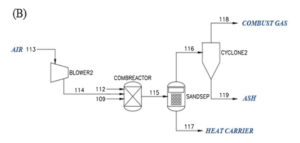
In this section, the heat generated by oxygen carriers is transferred to the pyrolysis reactor in the subsequent stage.
Pyrolysis Section
In this section, biomass (bagasse), required heat, and a bacterial culture for nitrogenase enzyme production are introduced into the reactor bed. After a period of semi-continuous reaction, the products, in gas and liquid forms, are sent to separation towers and product upgrading units after passing through cyclones. The table below presents the mass balance for this section.
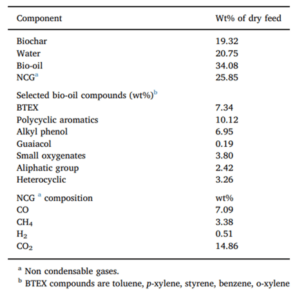
Pyrolysis Process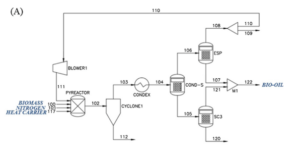
Emphasizing the Importance of Product Upgrading
Product upgrading is a critical component of the biofuel production process. Initially, a liquid mixture containing benzene, toluene, phenol, aromatics, naphthenes, alkanes, and other components is produced. This mixture requires upgrading to produce gasoline, diesel, jet fuel, and other products. The output products from the hydrolysis section are summarized in the table below.
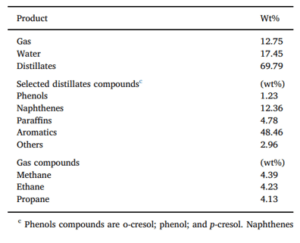
In continue The data will be passed on to the subsequent processing steps.
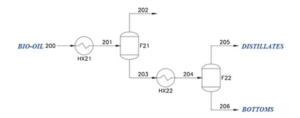
The final products of this process include diesel, jet fuel, and gasoline.
Process Simulation
To conduct a comprehensive economic analysis of the entire biofuel production process, a simulation was carried out using Aspen Plus version 12.1.
Equation of State
The entire process was simulated in Aspen Plus version 12.1 utilizing the Solids model, which is particularly well-suited for the components involved in this simulation, as illustrated in the figure below.
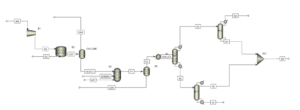
Process Unit Technical and Economic Calculations
The following equipment has been considered in the economic calculations:
- Compressor
- Pyrolysis and combustion reactors
- Cyclones (neglected due to the high cost of reactors)
- Distillation column and two-phase separators (detailed information unavailable, an estimate has been added)
Compressor
The compressor capacity was extracted from the simulation and the necessary calculations were performed.
The Price of the Reactors in the Whole Process

Estimated Total Costs for All Reactors
Based on the total cost of reactors in 1990 being $5.8 million, the cost of reactors in 2022 can be estimated by multiplying this value by the ratio of 738.2/358.
Overall Investment Calculations
Parameters such as instrumentation, piping, site preparation, etc., have been estimated using the TCI table below and the total costs have been calculated to estimate the overall investment.
Calculations for the Total Product Cost (TPC)
Conclusion
The utilization of biofuels promotes greater energy efficiency, energy security, and sustainable environmental development. In this study, bagasse was employed as a feedstock. A comprehensive simulation and detailed economic analysis were conducted. Key considerations included the appropriate selection of the equation of state, adjustment of input streams, and thorough evaluation and simulation of equipment.
Aspen Plus Simulation and Economic Evaluation of Bio-Oil Production from Solid Biomass (Bagasse)
This project involves the simulation and economic evaluation of the biofuel production process using Aspen Plus V12.1.
